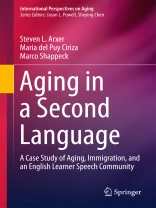This unique account of English language acquisition by Latino elders shines intimate light on the increasingly complex concerns of aging immigrant minority populations. Rich qualitative findings detail sociocultural barriers to and social and emotive factors that promote second language acquisition in older age. The book’s case study highlights diverse cognitive and social processes as elders establish a sense of self as learners and as part of a learning community, and a sense of place as newcomers navigating a challenging environment. And first-person comments from the group members deftly illustrate the intricacies of being an immigrant in a rapidly changing America as well as the myriad intersections of race/ethnicity, gender, culture, and country that shape immigrant life.
Included in the coverage:- Minority aging in an immigrant context.
- Late-life second language acquisition: cognitive andpsycholinguistic changes, challenges, and opportunities.
- Building emotions for self-identity and learning.
- Practicing safe language socialization in private and public spaces.
- Language resocialization and gender allies.
- Aging, second language acquisition, and health.
Aging in a Second Language gives clinical social workers, gerontologists, health and cross-cultural psychologists, sociologists, educators and other professionals deep insights into the lives of an emerging active elder population. It also pinpoints challenges and opportunities in research, literacy program design, pedagogy, clinical outreach, education policy, and service delivery to immigrant elders.
Table of Content
Introduction.-
Aging as a Hispanic in a Second or Foreign Language .- Aging among Hispanic immigrants: risks and challenges.- The language effect and immigrant aging well-being.-
Applied Linguistics and Contextualizing Older Hispanic Language Acquisition. – Social constructivism and the role of place for immigrant language learners.- Dallas area case study on older immigrant English second language learners.-
Aging in Place: The Restructuring of Formal and Informal Immigrant Arrangements .- Building emotions for self-identity and learning.- Family and social networks.- Practicing public socialization in safe places: work education and health.- Language resocialization and gender allies.- Conclusion.
About the author
Steven L. Arxer, Ph.D. is associate professor at the University of North Texas at Dallas in the Department of Sociology and Psychology. He specializes in qualitative research on minority populations, with a focus on intersectionality, aging and development.
Maria Ciriza-Lope, Ph.D. is assistant professor at the University of North Texas at Dallas in the Department of Languages and Communication. She is an expert on language contact, Spanish heritage language pedagogy and language revitalization movements.
Marco Shappeck, Ph.D. is assistant professor at the University of North Texas at Dallas in the Department of Teacher Education and Administration. He specializes in linking education applications of sociolinguistic research to the teaching of English and Spanish as a second or foreign language.












